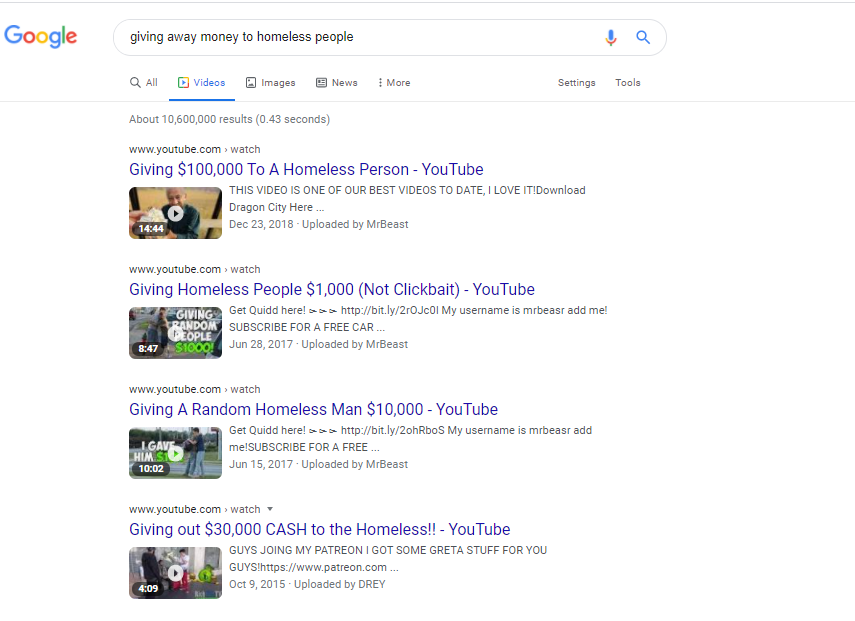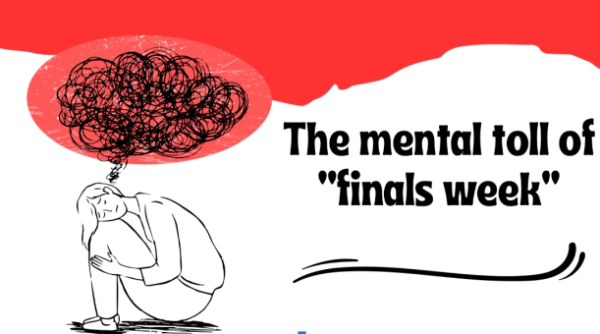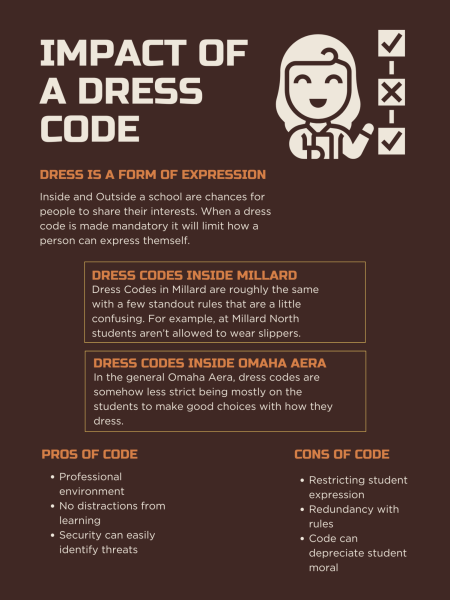Charity for clout
Influencers need to stop recording their acts of kindness
A Google search for “giving away money to homeless people” provides over nine million results. The top results are YouTube videos with hundreds of thousands or even millions of views, all of which use charity as clickbait to get views and money.
March 25, 2021
In a YouTube video titled “I gave $20,000 to random homeless people,” MrBeast (the 16th most popular YouTuber at over 55 million subscribers) walks up in Gucci slides to a homeless person standing on a street corner and gives the man a handful of gift cards. The video, which has over 33 million views, is part of a trend that has been sweeping social media in recent years: acts of kindness.
These videos are wildly popular and generate tons of positive responses. A video titled “paying for people’s groceries” by the family vlogging channel This Is How We Bingham received 759,000 views. Riceman’s “giving away $20,000 in free money” got one million views. The channel ThatWasEpic posted a video titled “knocking on strangers doors and paying their rent” and received 18 million views.
These videos, however, leave some viewers, such as myself, with an uncomfortable feeling. As much as I want to believe that the underlying intentions with these videos are good, the insensitive and tasteless execution makes that hard to fully believe.
In one of his first charitable videos, titled “Giving a random homeless man $10,000,” MrBeast walks up to a man sitting with a cardboard sign on the sidewalk before pointing out that he’s a YouTuber and “you can see the camera there.” He tells the man that he is creating “a series where I just be nice.” After handing over an envelope with $10,000 in cash, MrBeast asks the recipient a few questions about his situation. The man reveals that he isn’t able to shower, to which MrBeast simply responds “ew.”
The issue with these videos is not the acts of charity themselves. Rather, it’s the filming, posting and monetizing of someone’s supposed generosity that causes problems. The wealthy influencers who profit off of these videos rarely understand the significance behind their exploitative actions.
At one point in his “giving a random homeless man $10,000” video, MrBeast laughs as he admits that he “can’t relate” while the recipient is explaining his situation. MrBeast asks if they can show the tent where the man is living, and the man, clearly not wanting to offend the person who just gave him 10k, asks “do you have to?” because it is “just embarrassing.”
This feeling of shame is extremely common among homeless people, according to research from the University of Iowa, and it’s a feeling that someone like MrBeast, by his own admission, doesn’t understand. Like the tons of other influencers who have made videos like these, he is shoving a camera in the faces of vulnerable people without knowing the shame associated with having a situation like that exposed.
This exploitation is made worse by the fact that the point of these videos, for many creators, is to go viral — not to inspire, but to profit. Despite being cloaked in the language of charity (like talking about a series where you “be nice”), these videos often make more money than they give away (like when MrBeast spends the first four minutes advertising a sponsor and then has three mid-roll ads). Is it really “giving back” if you’re profiting off of your acts of charity?
True kindness and community is about serving in our time of abundance and knowing that we would be served in a time of need. Charity, at its core, is a mutual thing — not a display of wealth or power, which is something these videos overlook. Rather than take an opportunity to spark conversations about privilege and poverty, they center the influencer who is creating the video. Even the videos’ titles amount to “look at me, I did something nice” rather than sending the message of “I am privileged enough to be able to help others.”
For a lot of people, these videos revive hope in humanity. They may even inspire people to do similar acts of kindness in their own community or start conversations about privilege and gratitude. In a digital world that is overpopulated with content that glorifies drugs, money and violence, making videos about being charitable doesn’t seem so bad — but just because the bar is so low doesn’t mean that famous content creators can’t do better.
The acts in these videos can be done without being filmed, and not filming them makes the act even more personal and genuine. As for inspiring people through public acts of kindness, it’s possible to do that in a thoughtful and genuine way, even on social media. TikTok introduced a “charity stickers” feature last year that allows people to raise money for a nonprofit organization of their choice through their videos. It offers TikTok users a way to create a video that spotlights their own sense of humor, creativity or ideas rather than one that exploits people of a lower socioeconomic status, while still benefiting others. The internet is a great way to inspire others and get them involved in giving back, but it’s possible (and necessary) to do that without exploiting people.


















Anonymous • Feb 9, 2023 at 9:21 am
Jimmy is one of the small few that are justified in doing this. Ever since that first donation, he invested nearly all video profit back at his recipients. However, I do agree that most kindness content is problematic and selfish.
Ashley • Jan 15, 2022 at 7:31 am
This is a really thoughtful, eloquently article. Thanks for sharing!